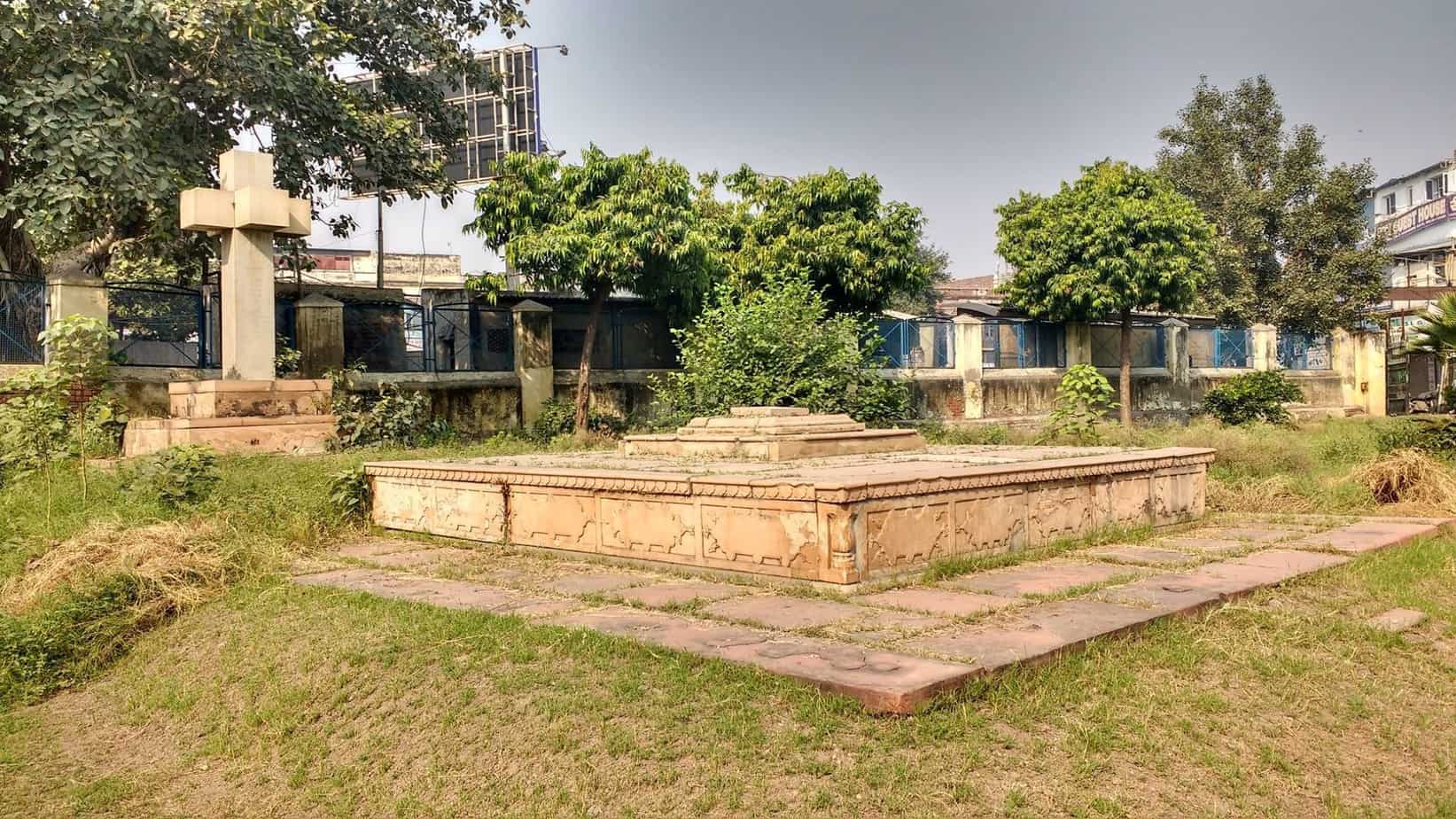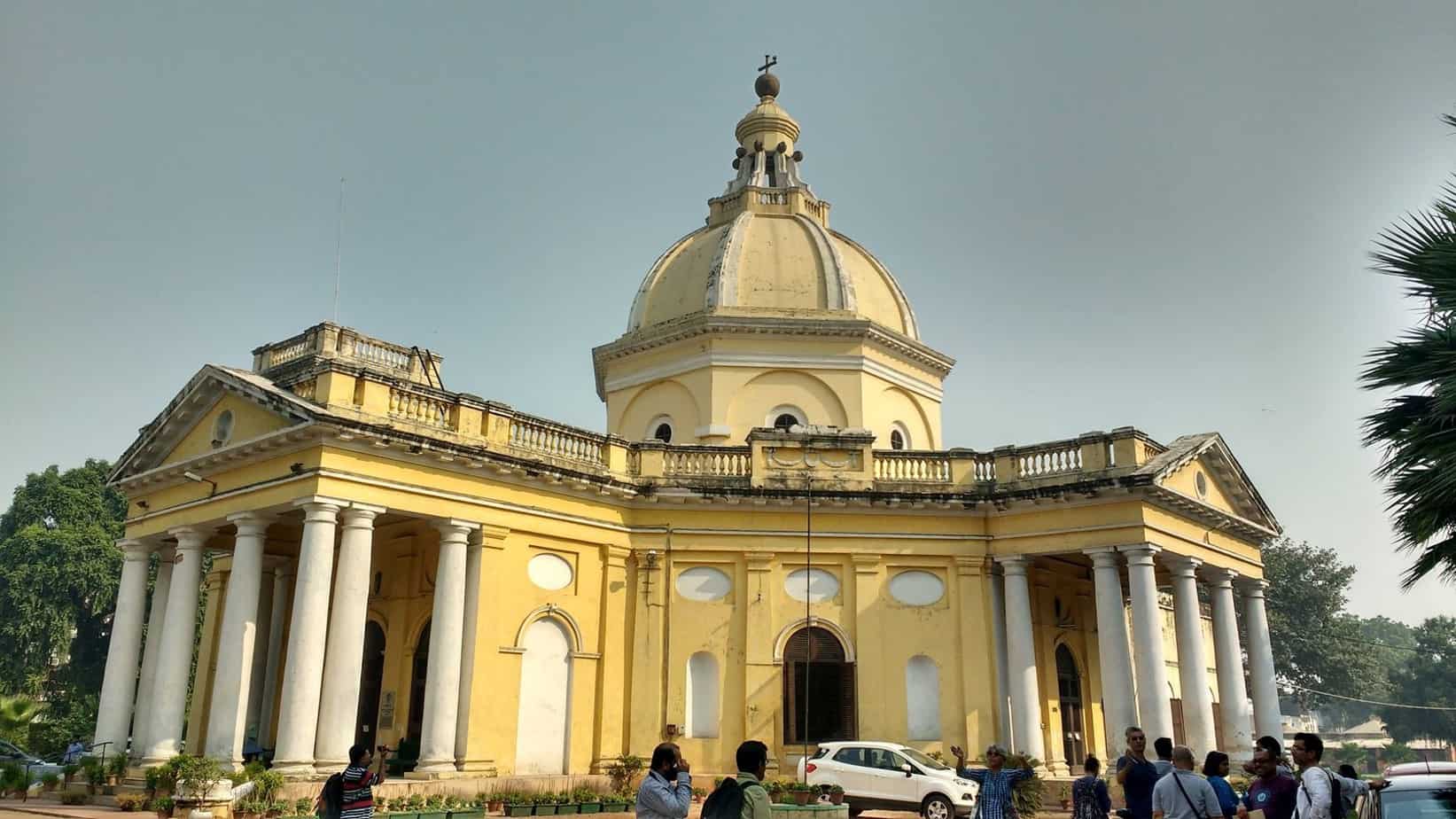“So have you heard this one?” said my brother. “The Stephanians put a board outside the college, saying ‘Dogs and Hinduites not allowed.'”
“And you know how the Hinduites responded?” he asked with a mischievous smile. “Dogs are allowed, but not Stephenians!”
Back when we were students, stories like these went far and wide, carried by nothing more than word of mouth—we didn’t need Facebook or Google to know about the rather ridiculous rivalry between St. Stephen’s College and Hindu College.
For the uninitiated, Hindu College and St. Stephen’s College are a part of Delhi University’s North Campus, and stand on opposite sides of the same road.
Friendly banter is common across the University, especially if colleges are next to each other. And so we archived this, and other memories along with our University degrees.
Fast forward to 2017.
The Klods
On a Sunday morning, we set our alarms for 5:00 am, and got ready to join a group of heritage explorers for a walk down memory lane.
Knowing and Loving Delhi Better (KLoDB) is a community of friends and acquaintances who meet over the weekend to explore the bylanes of Delhi. I first walked with the Klods (as they call themselves) a few years ago, when they went in search of Razia Sultan’s tomb in the heart of Old Delhi. Now, in its twentieth year of walking, the group was organising special walks with guest guides.
On this particular Sunday, the walk was led by Dhruva N. Chaudhuri, an illustrious photojournalist. Being a resident of Delhi for 75 years,he has seen the city through many different lenses and walked on roads that no longer exist today—either because something else was built over them, or because their names were changed! The agenda of the walk was to see Delhi—Chaudhuri’s Delhi.
We gathered at the Kashmiri Gate Metro Station and walked across to the old double-arched gate. The leader sat on a bench and began to speak, and the rest of us stood as silently as we could. Sumanta Bhowmick, one of the organisers of the walk offered a microphone. After speaking a few lines into the mike, the visibly uncomfortable and irritated Mr Chaudhuri said, “Take this away! I am of the firm opinion that if one cannot address a gathering of 50 to 75 people, one has no business to be in the field of mass communication!” With the foreign object out of the way, he was free to move his hands and point in different directions with his walking stick.

With the mike out of the way, team leader Dhruva N Chaudhuri comes into his own. Pic: Atul Srivastava.
“It was on the 31st of March 1942…” said Chaudhuri, as he opened a page from his book and held it up above his head. “…that I saw the beautiful sunrise above Kashmiri Gate, and made this picture.” The picture was of a time when the monument actually functioned as a gate. The roads that were depicted in his picture have long since been closed to make way for the inter-state bus terminus. “The region beyond the bus terminus was…” Chaudhuri paused, “… and is Qudsia Bagh. Such a beautiful place…” He shook his head a few times as he spoke, and expressed his disappointment at how the place had been utterly ‘vandalised’.
Of churches and palaces
The remainder of our walk was to have many such snippets about the years gone by—many from Chaudhuri himself, and some also, from my fellow Klods.
As we made our journey to St. James’ Church, I began a conversation with Syed Mohammed Qasim and we chatted about how little we all know our own city. “There are so many small treasures around Delhi!” Qasim’s love for the city was evident in his enthusiastic speech, and I made sure I extracted as much as I could from him during the walk! “Take this church now. There are two cemeteries here. I’ve come here after hours. It was a little scary, yes. But the epitaphs on the side of the church, each one is absolutely beautiful. And you see that memorial in the front? It makes use of a mixture of Mughal and colonial architectural styles.”

A memorial built in a hybrid architectural style (combining elements from colonial and Mughal styles), dedicated to Christians who died during the mutiny of 1857.
Meanwhile, Chaudhuri narrated the origins of the church—about how Colonel James Skinner, lying wounded on the battlefield, had vowed to construct a church if he survived. He also told us about the existence of a park on the other side of Lothian road, where the church bands used to play after the services.
We crossed Lothian road to the site of the park. That park no longer exists, but the building next to it, does. That building—a beautiful medieval style bungalow—once served as the campus of St. Stephen’s college. Today, it houses the office of the Chief Election Commission. I learnt that this wasn’t the only heritage house to be converted into a government building.
“We have palaces in Delhi?!” I let out my ignorance. I always thought Delhi was one big graveyard. (And perhaps justified too?) Many of Delhi’s palaces and beautiful bungalows, mostly around Connaught Circus (now called Rajiv Chowk) are government offices. I found out that Sumanta had even written a book about it, titled Princely Palaces in Delhi. Qasim and I agreed—it’s a shame that common people have no access to these shared treasures.
Next to the church was an abandoned medieval building. Qasim informed me that it was originally Dara Shukoh’s palace. Prince Dara Shukoh was the first son of Shah Jahan, and heir apparent, until he was killed by his brother Aurangzeb.
An interesting aside: Dara Shukoh’s name is often misspelt as Dara Shikoh—even the recently rechristened road in Delhi carries the incorrect spelling. The word Shukoh means victory in Persian, while Shikoh means terror! The intellectual Dara Shukoh’s political life was short lived. But today’s binary politicians have dragged him into the twenty first century. The powers that be in this day and age—those who re-write history books, those who rename roads, and the unknown forces that update Google—somehow lose not only the nuances of history, but also the actual names of protagonists!
Coming back to the walk, according to folklore, there used to be an underground passage connecting the palace to the Red Fort. The rulers back then didn’t want to move in public spaces. No disruption to traffic on account of VIP movement! The palace fell victim to several assaults over time and all that remains now is the library.
A rivalry that’s survived the ages
We walked past the old St. Stephen’s campus, towards another building. A signboard outside the complex read “Old Hindu College.” Dhruva Chaudhuri’s alma mater.
This property had once belonged to Col James Skinner, and was later purchased by Rai Bahadur Lala Sultan Singh, who in turn donated it to the Hindu College. When St. Stephen’s college was founded, it catered only to the Europeans, and Indians were refused admission into the college. In order to give Indians nationalist (and non-sectarian) education, and to stand up against the elitist outlook of St. Stephen’s, a Hindu trader set up a college right next to it.
The two campuses were initially in Kinari Bazaar, Chandini Chowk. When St. Stephen’s moved to Kashmiri Gate, the Hindu college pursued it. And finally when the one moved to the present-day University Campus, so did the other!
Sitting in a shaded area, Chaudhuri pointed his walking stick to different parts of the complex, outlining the contours of a two-storeyed haveli. “Those yellow blocks you see behind? That’s where we had the Chemistry lab. And there… in that corner… there used to be a rotunda there, where we used to have our assembly… Many great people came here in my time. Oh I have myself heard Homi Bhabha here!”
Today, all that remains of the dogged determination of Hindu College to give Indians an equal chance at education, is the signboard. The original haveli has been torn down, and a boring concrete government building stands in its place.
Gastronomic delights
We had been exploring and listening to stories for over two hours, and our collective stomachs began rumbling. Ramit Mitra, who also runs his own series of weekend walks called Delhi by Foot, recommended a local eating joint next to the old Hindu College. Makhan Lal Tika Ram’s speciality are Bedmi pooris, and one of the few places where it is still served with sitaphal ki sabzi on the side. All of us rushed to the eatery. The sun had drained us out and sweet lassi was everyone’s choice of beverage. A round of jalebis for everyone too!
After breakfast, we lingered on at the restaurant before heading home, while the rest of the group continued towards Mori Gate—the early morning alarm on Sunday proved its worth with old memories and new friendships.
Meeting family for a small get-together later that day, I asked my brother, “So you remember that thing between Hindu and Stephen’s?”




I had lived in Sultan Singh Building, Kashmere Gate, Delhi 6 from 1948 until 1981.Still remember each and every shop, including locations.Studied at Delhi Ploytechnic School situated on the premises of Dara Shikoh Liabrary, where we had our chemistry lab.Opposite was biggest book store and publishers Atma Ram And Sons on Nihcolson Road, besides was moviechall Minarva.Pt Ashok Kayashap,leading hand writing expert and my friend of child hood day still live above C Lal & Sons, Chemists.Studied at St Stephens’s College, DU campus and graduated in 1964.Rivalry between Stephens and Hindu had never died with slogans during cricket matches on DU Grounds”Joru kaa bhai (Stephanians) nahi jite’ gaa etc all had lots of fun